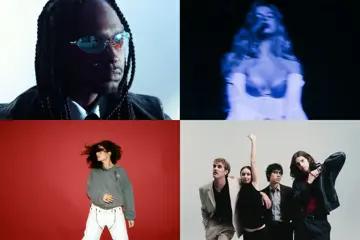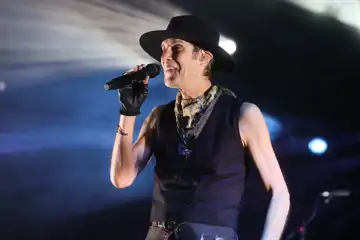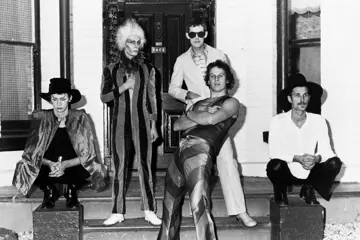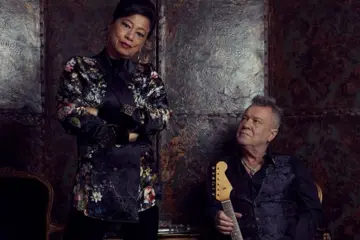Perhaps it's unsurprising that an exhibition of lyrical and seductive artworks is titled Love & Desire, but the National Gallery Of Australia’s summer blockbuster of Pre-Raphaelite masterworks, on loan from London’s Tate Gallery, could also be characterised by a different pair of nouns: romance and rebellion. More than 100 works, by 21 artists, have been loaned to the NGA, in what represents the most ambitious, not to mention well-heeled, showing of Pre-Raphaelite artworks ever staged on Australian shores.
"The curators have been very thoughtful in their selection for this show. These aren’t just representative works, but true masterpieces of the movement," explains NGA director Nick Mitzevich. "These paintings, tapestries and writings are truly emblematic of the major themes being explored by the Pre-Raphaelites."

John William Waterhouse
The Lady of Shalott 1888
oil on canvas
153 x 200 cm
Presented by Sir Henry Tate 1894
Tate, © Tate, London 2018
The Pre-Raphaelite Brotherhood was a collective of English artists, poets, designers and philosophers who banded together in the mid-19th century with a shared vision to shake-up the art world. They intended to disrupt what they viewed as a stagnant status quo; rejecting the pervasive Mannerist styles that held up the elegant yet aloof Classical compositions of Raphael and Michelangelo as their ultimate goal. Founded by William Holman Hunt, John Everett Millais and Dante Gabriel Rossetti, the Pre-Raphaelites revelled in the sensuality of nature, creating artworks that shunned the mechanistic and by rote, in favour of a far bolder range of expressive and emotional possibilities. The Brotherhood believed in the agency of the individual and the importance of original thinking. But above all, they believed art should reflect the full gamut of human experience, that it should explore the spiritual, the romantic and the dramatic in ways that would immediately move and connect with a viewer.
"This show is an unparalleled collection that defines the movement, but these are also the finest examples of work by the individual artists themselves. Of course, people are going to be lured in by the paint quality and the trickery of illusion and the sheer romance and seduction of these works, but they're also going to be captivated by these major examples that define who each of the exhibited artists were," Mitzevich adds.
Indeed, two of the exhibition's biggest showstoppers are perhaps the most famous Pre-Raphaelite paintings ever created. This will be the first occasion these two beloved works from the Tate's collection - John Everett Millais' Ophelia (pictured below) and John William Waterhouse's The Lady Of Shalott (pictured above) - have left the Tate's walls at the same time.

John Everett Millais
Ophelia 1851-52
oil on canvas
76.2 x 111.8 cm
Tate collection presented by Sir Henry Tate 1894
© Tate, London 2018
But it's not only these revered paintings that will be putting visitors to the NGA in a romantic frame of mind. A companion program, aptly titled Summer Of Love, will enhance the popular appeal of these paintings with signature events like Summer Lovin' which will see TV presenter and host of The Bachelor Osher Gunsberg offering romance tips at an alfresco picnic, and an intimate performance with ARIA-Award winner Sarah Blasko, who will deliver a one-off acoustic set to just 40 audience members within the exhibition's galleries. There will even be a giveaway wedding package that will allow one lucky couple to get hitched in front of their favourite Pre-Raphaelite masterpiece.
The Summer Of Love events add a frisson of pop-culture zest to the show, which as Mitzevich explains, is perfectly on brand. "One of the mandates of the Pre-Raphaelite Brotherhood was to make art popular. They worked with printers and publishers to make their work widely accessible - I think the most direct equivalents today would be Instagram and Facebook. The Pre-Raphaelites made work that was deliberately accessible, made for mass distribution; in their hearts they were populists. When we craft a public program around it, it makes absolute sense to take inspiration from the works’ popular spirit. 'Accessible' can be such a dirty word, but if you ensure that there’s great credibility and that the works are of excellent quality and they tell a fascinating story of that moment, then we’re really encouraged by widening the narrative of this movement through contemporary culture. I truly believe, if the Brotherhood was still around today, they’d think it was the most reasonable extension of their philosophy."
But in addition to the simpatico resonances with the Pre-Raphaelite spirit, Mitzevich also acknowledges that events such as Blasko's performance offer a valuable opportunity to attract new audiences to the NGA. "Galleries are part of leading a cultural agenda; what the NGA does goes far beyond just staging exhibitions and making catalogues. We have a mandate to amplify the voice of the artist, and hanging the works for the public to see or printing beautiful catalogues are just two ways to do that. People digest culture and art in many different ways, so I want to make sure if you’re at the NGA you have an amazing and seductive and appealing experience, if you’re online you’re intrigued and fascinated by what we do, or if we’re on tour you’re motivated to find out where we are showing. So these additional activities in orbit around the main show, are really important for ensuring there are as many entry points as possible for as wide an audience as possible."
Love & Desire: Pre-Raphaelite Masterpieces From The Tate is at the National Gallery Of Australia until 28 Apr.















